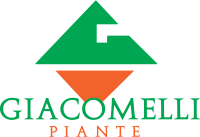PIF
The nursery sector and its criticalities
INTEGRATED PROJECT OF THE SUPPLY CHAIN
Green connections
Leader: Vannucci Piante
The production of ornamental plants in Tuscany is the most important sector within the wider horticultural sector. It is concentrated in the northern provinces of the region and in particular in that of Pistoia, Prato and Lucca.
The latest statistics in the sector are as follows: about 6,500 hectares of land, about 5,000 direct workers, GDP equal to about 500 million euro. The sector, after years of expansion, begins to show signs of weakness and obvious criticality, including the difficulty of programming production, the extreme fragmentation of land and management, the impact of production on primary environmental resources, the need to introduce process and product innovations. In addition, there is the growing competitiveness of companies and the difficulty of penetrating markets.
As an ideal continuation and completion of another project presented in 2011 and concluded in 2014, it aims to address the above mentioned issues by creating a chain that will have as reference points for participating companies:
- the nursery valley, that is to say, all the production nurseries of the participating holdings located mainly in the Pistoia plain or in adjacent areas and functionally connected;
- the nursery park, that is the nursery for permanent exposure of plants of immediate effect to be understood as excellence of the supply chain;
- the nursery campus, which is the place for training and promotion of the supply chain.
Not only that, the leading company wants to be a point of reference on the territory also of multifunctional companies, which combine traditional production with nursery to diversify and increase profitability. From this setting comes the title of the PIF “Verdi Connessioni”.
The interventions provided for by the PIF are many and concern:
- measures to improve the quality and quantity of primary production;
- interventions aimed at optimising production factors;
- energy efficiency measures;
- measures aimed at marketing;
- interventions aimed at introducing process and product innovations (VIAA project).
To achieve the objectives are intended to activate the measures 4.1-6.4-16.2 of the RDP.
The supply chain will involve the stages of primary production, processing (including storage and packaging activities prior to sale) and marketing. In addition to the project leader, 19 primary producers will participate in the project, of which 14 in direct form and 5 in indirect form, all related to the nursery industry. Of these, two will make investments necessary for their overall profitability in the diversification and processing segment respectively. The leader will also take care of the marketing and promotion of the product using the investments foreseen in this PIF and two dedicated structures already active; the Nursery Park and the Nursery Campus.
Another direct participant will be the University of Florence -GESAAF Department for the VIAA project, which aims to introduce process innovation through the use of substrates based on coconut fibre (renewable source) to replace peat (non-renewable source) in combination with different formulations of phospho-potassic fertilization, and product, aimed at obtaining, through controlled stress, nursery material evaluated on the basis of its adaptability to extreme climatic conditions (hence the name “innovative nursery for highly adaptable products”). The main expected result is the increase in primary producers’ income thanks to the substantial improvement in marketing conditions and the possibility of using two dedicated facilities (Nursery Park and Campus) for the
The needs of the participants and the objectives of the BIP
The ornamental nursery sector in general and the Pistoia nursery sector in particular comes from many years of expansion, but in the current economic situation it is in a phase of deadlock, in which its criticalities have clearly emerged.
The needs of the sector are therefore related to crop planning on a poly-annual basis extended to several companies able to work in “network” with each other in order to expand the range of goods available to the market, the need to specialise small and medium-sized production companies in specific groups of species and to entrust processing and marketing to structures organised for these tasks, so as to reduce production costs, stabilise revenues and increase gross operating income, as well as the improvement of safety conditions at the workplace linked in particular to the movement of plants (the order of magnitude is several million plants per year in containers and clods to be moved) and the reduction of the environmental impact on primary resources, promoting their responsible and sustainable use, the concentration of supply and the creation of logistics and exhibition centres with commercial and promotional tasks, process and product innovation.
The nursery sector must not remain detached from the surrounding territory, but must be the driving force of the agricultural economy: therefore promoting nursery must mean promoting the entire territory that refers to the “Nursery Valley” and its excellences.
The objectives of this BIP are:
- Quantitative and qualitative increase of the production, through the realization or functional restructuring of productive areas (greenhouses and new nurseries);
- Optimization of the factors of the production through purchase of means and equipments;
- Environmental improvement through energy efficiency, insulation buildings, eternal disposal, energy production for business use from photovoltaic systems;
- diversification of income on multifunctional farms;
- process and product innovation;
- improvement of handling, processing and marketing (including exposure and promotion of production).
The actions to overcome the criticalities, respond to the needs of companies and reach the objectives indicated above, in detail are:
Objective 1) – quantitative and qualitative increase in production
Objective 2) – Optimisation of production factors
Objective 3) – environmental improvement
Objective 4) – income diversification in multifunctional farms
Objective 5) – process and product innovation
Objective 6) – improvement of processing and marketing conditions in the sector
Innovation in the relationships between participants
The supply chain appears to be very innovative as regards the ordinary situation in Tuscany in relations between companies in the sector.
Among the critical issues of the sector were reported the heterogeneity of production, which can also reach tens of thousands of commercial items, and the polyannual duration of production cycles. It goes without saying that in the sector there are already forms of aggregation such as to allow individual companies to specialize and thus achieve economies of scale. They are basically two:
- The processing by stages, according to which a company performs only a part of the production cycle (for example propagation, cultivation in the field, pot cultivation, training pruning, etc…) and its finished product is a semi-finished product that the next one implements;
- The “crop account”, according to which one holding provides the other the basic semi-finished and withdraws it finished after a certain period of time by paying a fee for the service.
The fundamental difference between the two options is that in the first the risk of cultivation is entirely borne by the producer, while in the second it is divided between the two contractors.
Of the two forms of spontaneous aggregation spread throughout the territory, the sector in question provides for the use of both depending on the needs of individual companies: In any event, the aim is to standardize and stabilise the type of contractual and collaborative relationships that have existed for several years between the companies involved.
As a result, in the supply chain agreement each company has established with the leader planned quantities of plants to be delivered in account sale or cultivation account and a system of price determination.
The advantage is clearly mutual. The small company can specialize in a few essences, achieve economies of scale and focus on the quality of the product, having at the same time a certain base of revenues to plan investments. The leader in turn plans the range of products available to customers without having to look for it at need and without increasing dramatically their production size: it will thus be better to focus on processing activities, Marketing, which is your responsibility. At the same time it remains within the primary sector as the final marketing is always preceded by a stage of the cycle accomplished in the company (relocation, handling, processing).
In this project, apart from the leader, the majority of direct and indirect participants are medium or small size companies, comparable for turnover and employees.
The adhesion to the supply chain is aimed at the growth of all and the qualification of the product, in the intention of being able to better penetrate the foreign markets (North and European in particular) using the proven commercial experience of the leader.
The participating entities
Name Participant and Registered Office Legal Representative
A1) Vannucci Piante di Vannucci
Vannino
Diretto Pistoia Vannucci Vannino
A2) Società Agricola Castelmartini
società a responsabilità limitata
Diretto Larciano (PT) Baldi Papini Patrizia
A3) Giacomelli Piante Società
Agricola Semplice
Diretto Pistoia Giacomelli Giacomo
A4) Vettori Cristiano Diretto Pistoia Vettori Cristiano
A5) Capecchi Enio e figli Vivai
Piante Società Agricola Semplice
Diretto Pistoia Capecchi Claudio
A6) Eredi di Vettori Lanfranco
società agricola semplice di
Vettori Nicola, Silvio e Fabio
Diretto Pistoia Vettori Nicola
A7) Società Agricola Panconi
Osvaldo e figli S.S.
Diretto Pistoia Panconi Romina
A8) Cecchi Alessio Diretto Quarrata (PT) Cecchi Alessio
A9) Fattoria di Filettole di Paola e
Luigi Gherardi Piccolomini
D’Aragona Dazzi Del Turco società
agricola semplice
Diretto Prato Gherardi Piccolomini
Luigi
A10) Stanghini Alessio Diretto Pistoia Stanghini Alessio
A11) Niccolai Francesco Diretto Quarrata (PT) Niccolai Francesco
A12) Zerini Luca Diretto Pistoia Zerini Luca
A13) Società Agricola Vivai Piante
l’Edera di Turchi Emanuel e Turchi
Tiziano S.S.
Diretto Pistoia Turchi Emanuel
A14) Dolfi Piante Società Agricola
Semplice
Diretto Quarrata (PT) Dolfi Stefano
A15) Università degli Studi di
Firenze – GESAAF
Diretto Firenze Alberto Tesi
A16) Grazzini David Diretto Pistoia Grazzini David
B1) Vettori Leonardo Indiretto Pistoia Vettori Leonardo
B2) Torselli vivai società agricola
semplice
Indiretto Quarrata (PT) Torselli Lucio
B3) Bellini Alberto Indiretto Pistoia Bellini Alberto
B4) Dolfi Daniele Indiretto Quarrata (PT) Dolfi Daniele
B5) Cecchi Fratelli Società
Agricola Semplice
Indiretto Quarrata (PT) Cecchi Fabio



